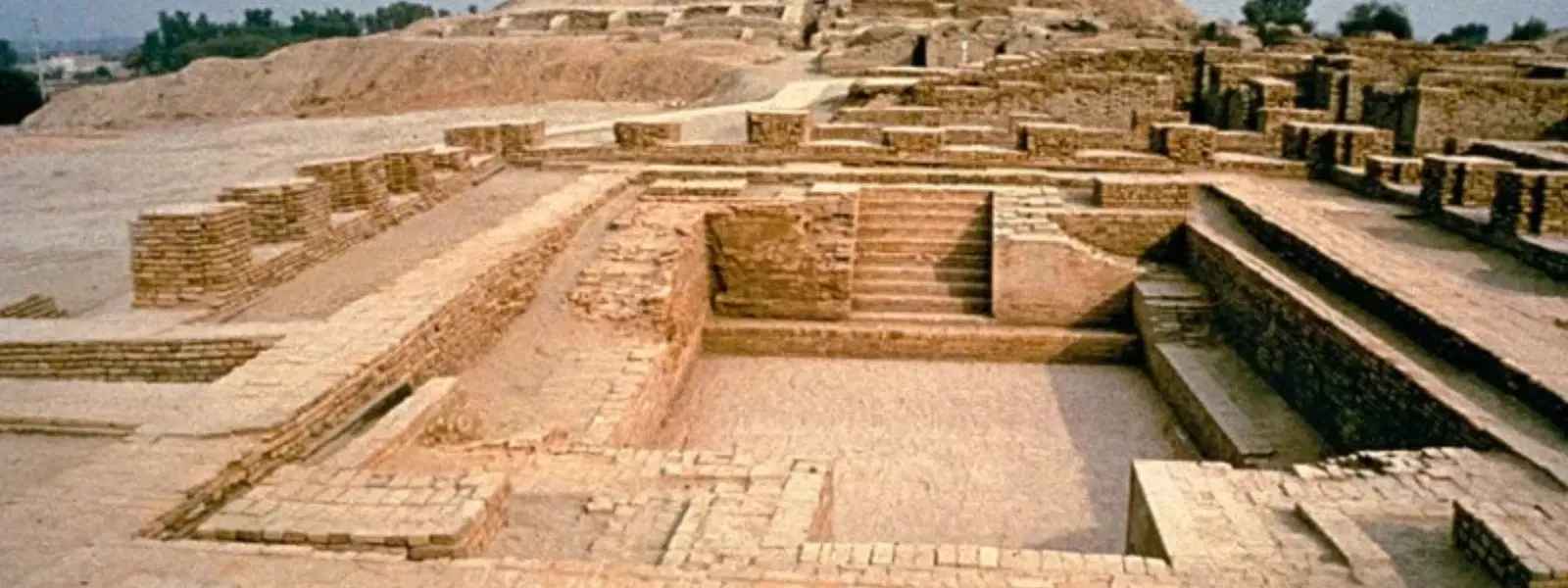
Flights
•04 min read

The grandeur of the Indus Valley Civilization comes alive when exploring its iconic urban centers, Dholavira and Mohenjo-Daro. Both cities stand as compelling testaments to the ingenuity of ancient urban planning and trade systems. In this blog, we dive deep into a comparison that reveals the unique contributions of these historical sites to Harappan culture, architecture, and economy. Readers will gain insights into the origins, historical significance, architectural advancements, sophisticated water management techniques, and vibrant trade economies that defined these ancient settlements.
Dholavira was unearthed by archaeologist J.P. Joshi in 1967, a discovery that reshaped our understanding of the Indus Valley Civilization. Located in Gujarat, India, this site is a crucial indicator of ancient urban design. In contrast, Mohenjo-Daro, discovered by R.D. Banerji in 1922, is nestled in the Sindh region of Pakistan. Both cities flourished during overlapping periods, emerging as major urban centers that played a pivotal role in shaping early urban societies.
Dholavira is not only celebrated as a premier archaeological site but also honored as a UNESCO World Heritage Site, underscoring its vital role in the evolution of Harappan culture. Its well-planned layout and evidence of advanced water management elucidate how ancient communities managed scarce resources. Mohenjo-Daro, often regarded as one of the largest and most sophisticated cities of the Indus Valley Civilization, continues to captivate scholars and travelers alike with its complex societal structure and urban achievements.
Both Dholavira and Mohenjo-Daro stand out as marvels of ancient urban planning. Dholavira impresses with its three-part division into the citadel, middle town, and lower town. This unique segmentation not only highlights the social stratification but also demonstrates an ingenious approach to civic administration and space utilization. Mohenjo-Daro, on the other hand, is renowned for its grid-like pattern, which epitomizes the orderliness and methodical planning characteristic of the Harappan civilization. The layout of both cities includes intricately designed drainage systems and communal spaces that continue to inspire modern urban architects.
Dholavira’s architectural legacy is deeply intertwined with its water conservation prowess. The city's extensive reservoirs and water management structures are a testament to the civilization’s commitment to sustainable living in challenging environments. Meanwhile, Mohenjo-Daro’s iconic Great Bath stands as a monumental example of ritualistic and public architecture, symbolizing the city’s cultural and social dimensions. Together, these unique architectural features reveal a civilization that mastered both aesthetics and practicality in its constructions.

Water management was critical for the survival of Dholavira in its semi-arid setting. The city harnessed an ingenious combination of reservoirs, dams, and channels to collect and conserve water, ensuring a steady supply for its inhabitants. The effectiveness of these measures underscores the advanced engineering skills of the Harappan culture and the understanding of environmental challenges. Dholavira's water management is not just a historical curiosity; it also offers practical insights into sustainable resource management that resonate even today.
While Dholavira showcased water conservation, Mohenjo-Daro excelled in managing water through an advanced drainage system. Covered drains, interconnected with a network of wells, kept the city hygienic and organized. This well-planned system reflected a community sensitive to public health and urban order. When comparing the two, the contrasting approaches—water conservation in Dholavira and efficient drainage in Mohenjo-Daro—highlight the diverse environmental strategies adopted by Indus Valley Civilization cities to address their local challenges.
Dholavira’s strategic location along ancient trade routes contributed significantly to its thriving economy. Evidence of trade items such as beads, seals, and pottery discovered during its excavations points to a vibrant marketplace that linked this urban center to distant regions. This not only fostered cultural exchanges but also strengthened the broader economic framework of the Indus Valley Civilization.
Mohenjo-Daro served as a bustling commercial hub where trade in textiles, metals, and other valuable goods was commonplace. The economic vitality of the city was bolstered by its sophisticated urban infrastructure which supported a wide range of activities from craft production to large-scale commerce. By comparing the economic contributions of both cities, it is evident that each played a distinct yet equally important role in shaping the financial landscape of the Harappan era.
The rich excavation findings at Dholavira include a large signboard displaying mysterious Indus script symbols, alongside an array of artifacts that shed light on everyday life in the city. These discoveries not only reveal the technical and cultural prowess of the inhabitants but also provide valuable insights into the socio-cultural dynamics of the period. The dating of these artifacts helps historians piece together a vivid picture of life in an ancient urban settlement.
Mohenjo-Daro offers its own unique lens into the past with significant discoveries such as seals, intricate figurines, and the enigmatic Indus script. These artifacts continue to challenge scholars, as the script remains undeciphered. However, the cultural significance of these items is undeniable, as they help illustrate the complex societal structures and artistic expressions that defined the Indus Valley Civilization.

Did you know? Dholavira’s reservoirs are among the earliest examples of sophisticated water conservation techniques in human history. These structures not only ensured survival in a semi-arid region but also demonstrated the ingenuity of Harappan engineering.
Dholavira is renowned for its advanced water management systems, unique three-part city layout, and its role in ancient trade routes.
Key findings include massive reservoirs, a large signboard with Indus script symbols, and various artifacts like seals and beads.
Dholavira was discovered by archaeologist J.P. Joshi in 1967 during excavations.
Dholavira was divided into three parts: the citadel, the middle town, and the lower town, reflecting advanced urban planning.
In comparing Dholavira and Mohenjo-Daro, we uncover two distinct yet complementary legacies of the Indus Valley Civilization. Both cities demonstrate pioneering urban planning, innovative water management, robust trade networks, and rich cultural tapestries that continue to influence modern archaeological studies and urban development. The stories of these ancient settlements remind us of the enduring legacy of past ingenuity and encourage further exploration into the mysteries and achievements of the Harappan world.